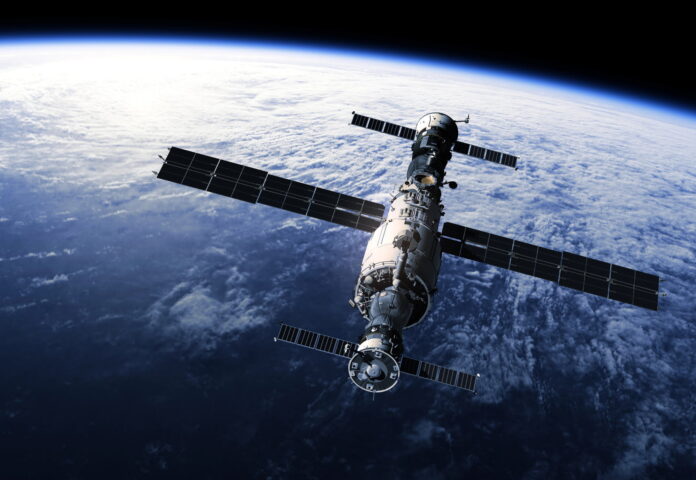Satellite earth observation energy management is revolutionizing the power industry, offering unprecedented insights and efficiency gains. This cutting-edge technology is reshaping how we generate, distribute, and consume energy on a global scale. From optimizing renewable energy placement to enhancing grid resilience, Earth observation satellites are proving to be invaluable tools in the quest for a more sustainable and reliable energy future.
The Rise of Satellite Technology in Energy Management
The integration of satellite earth observation into energy management practices has grown exponentially in recent years. According to a report by MarketsandMarkets, the satellite-based Earth observation market is expected to reach $4.5 billion by 2025, with energy management being a key driver of this growth.
How Satellites Are Changing the Game
Satellites equipped with advanced sensors and imaging technologies are providing energy companies with a wealth of data that was previously unattainable. This information is being used to:
- Optimize renewable energy installations
- Improve power grid management
- Enhance disaster response and recovery efforts
- Monitor environmental impacts of energy production
Revolutionizing Renewable Energy Planning
One of the most significant applications of satellite earth observation energy management is in the renewable energy sector. Solar and wind power installations benefit greatly from the precise data provided by Earth observation satellites.
Solar Power Optimization
Satellites can analyze solar irradiance patterns with unprecedented accuracy, helping identify prime locations for solar farms. The National Renewable Energy Laboratory uses satellite data to create detailed solar resource maps, enabling more efficient solar panel placement and orientation.
Wind Farm Siting
Similarly, satellite observations of wind patterns and speeds at various altitudes are crucial for determining optimal wind turbine locations. This data helps maximize energy output and reduces the risk of underperforming wind farms.
Enhancing Power Grid Resilience
Satellite earth observation energy management is also transforming how utilities maintain and protect power grids. By providing a bird’s-eye view of vast infrastructure networks, satellites enable more proactive and efficient grid management.
Vegetation Management
One of the leading causes of power outages is vegetation interference with transmission lines. Satellite imagery allows utilities to monitor vegetation growth near power lines, enabling targeted trimming and maintenance efforts. This approach has been shown to reduce outages by up to 30% in some areas.
Infrastructure Monitoring
Satellites can detect subtle changes in infrastructure, such as sagging power lines or shifting transformer stations. This early warning system helps prevent equipment failures and reduces downtime.
Revolutionizing Disaster Response and Recovery
When natural disasters strike, satellite earth observation energy management proves invaluable for rapid response and recovery efforts.
Real-Time Damage Assessment
In the aftermath of hurricanes, earthquakes, or other disasters, satellites provide immediate, wide-area views of affected regions. This information helps utilities prioritize repair efforts and allocate resources more effectively.
Predictive Modeling
By analyzing historical satellite data alongside current observations, energy companies can develop more accurate predictive models for future disasters. This foresight allows for better preparedness and more resilient infrastructure design.
Environmental Monitoring and Sustainability
Satellite earth observation energy management also plays a crucial role in monitoring the environmental impacts of energy production and consumption.
Emissions Tracking
Advanced satellites can detect and measure greenhouse gas emissions from power plants and other industrial sources. This capability is essential for verifying compliance with environmental regulations and identifying opportunities for emissions reduction.
Land Use Changes
Satellite imagery helps track changes in land use associated with energy production, such as deforestation for biomass or habitat disruption from fossil fuel extraction. This information is vital for assessing the full environmental impact of various energy sources.
The Future of Satellite Earth Observation in Energy Management
As satellite technology continues to advance, the potential applications for energy management are expanding rapidly.
Artificial Intelligence and Machine Learning
The integration of AI and machine learning with satellite data is opening new frontiers in energy management. These technologies can analyze vast amounts of satellite imagery to detect patterns and trends that human operators might miss.
Hyperspectral Imaging
Next-generation satellites equipped with hyperspectral sensors will provide even more detailed information about the Earth’s surface. This technology could revolutionize everything from solar panel efficiency assessment to early detection of oil spills.
Increased Temporal Resolution
As satellite constellations grow, the frequency of Earth observations will increase. This higher temporal resolution will enable near-real-time monitoring of energy infrastructure and consumption patterns.
Conclusion: A Brighter Energy Future
Satellite earth observation energy management is not just a technological marvel; it’s a transformative force in the power industry. By providing unprecedented insights into energy production, distribution, and consumption, this technology is paving the way for a more efficient, resilient, and sustainable energy future.
As we face the challenges of climate change and growing global energy demand, the role of satellite earth observation in energy management will only become more critical. From optimizing renewable energy installations to enhancing grid resilience and improving disaster response, satellites are helping us make smarter decisions about our energy resources.
The revolution in energy management driven by satellite technology is just beginning. As we continue to innovate and refine these tools, we can look forward to a future where our energy systems are more responsive, efficient, and in harmony with the natural world they serve.

